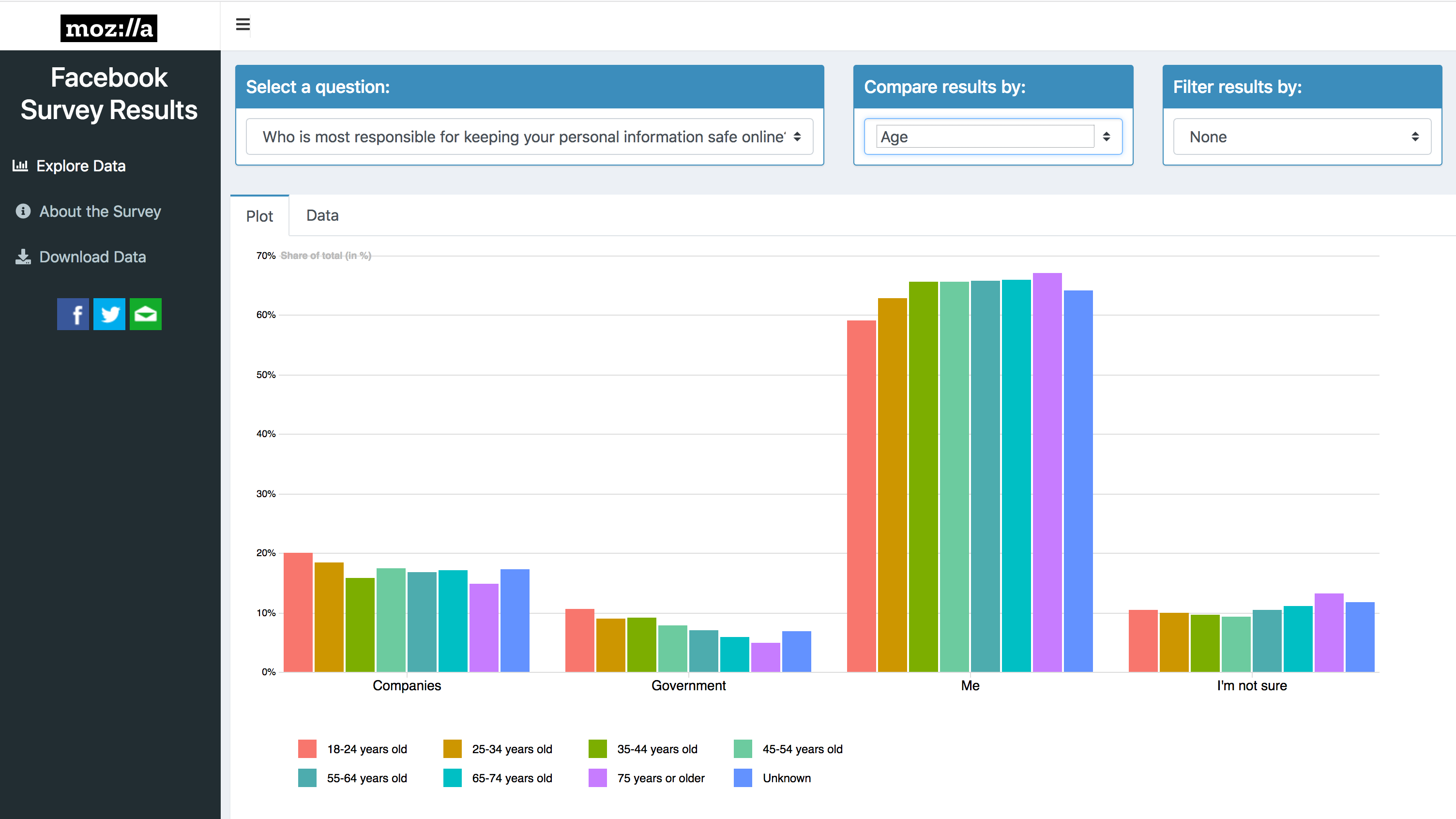Fri, Nov 29, 2019

The European Journalism Center has put together a new kick-ass resource for data journalists at DataJournalism.com. It was a great honor to get to contribute an article to the growing list of resources.
I wrote a little guide on how to think about personal information when working with datasets, how to identify data that could expose personal details, and how to remove such information before publication. There is a lot of useful content on the site and I would definitely recommend signing up for the newsletter.
Fri, Jun 8, 2018

Couple of weeks ago I got to work on an interactive tool to explore data from a survey that Mozilla ran in the wake of the Cambridge Analytica revelations. I wrote a piece about my experience of building the tool, first in Shiny and later in d3js, for the Data Driven Journalism site.
You can find the full article here.
Shiny Repo
d3js Repo
Live version of the tool
Wed, Mar 28, 2018
If you are familiar with Google Data Studio, you know that it is an incredibly useful tool for building and sharing dashboards. It comes with a nifty set of built-in data connectors, from the usual suspects (GA, Adwords, Google Sheets), to more advanced data sources, such as MySQL, PostgreSQL or BigQuery. The most exciting part, however, is that, as of couple of months ago, you can also build your own connectors.
Thu, Mar 15, 2018

A couple of weeks ago a friend and an accomplished campaigner, Josh Tabish (@jdtabish), came up with the idea of building a simple page that would allow people to tweet at companies in the FairPlay coalition, which proposed to censor the Internet in Canada. It turned out to be a fun little project, resulting in https://unfairplay.ca.
The site got a lot of attention, gaining a top spot on /r/technology, getting over 60,000 visits, generating 17,000 tweets and some 5,000 comments to the CRTC.
Wed, Mar 14, 2018
After many years of trials, errors, failures and occassional successes, I hope to take the next step in understanding how technology, data and analytics can be used to advance the work of mission-driven organizations. That step means moving away from a private playground, where successes and failures were only mine to ponder, to a more open space, where I can share some of my thinking and hopefully learn from others.
 The European Journalism Center has put together a new kick-ass resource for data journalists at DataJournalism.com. It was a great honor to get to contribute an article to the growing list of resources.
I wrote a little guide on how to think about personal information when working with datasets, how to identify data that could expose personal details, and how to remove such information before publication. There is a lot of useful content on the site and I would definitely recommend signing up for the newsletter.
The European Journalism Center has put together a new kick-ass resource for data journalists at DataJournalism.com. It was a great honor to get to contribute an article to the growing list of resources.
I wrote a little guide on how to think about personal information when working with datasets, how to identify data that could expose personal details, and how to remove such information before publication. There is a lot of useful content on the site and I would definitely recommend signing up for the newsletter.

